Abstract
By using mice infected with strains of Brucella abortus and Brucella melitensis we examined the histological responses to infection, the relationship of histology to persistence of organisms, and the relation of persistence of organisms to the acquisition of acquired cellular resistance (ACR). Infection with B. abortus resulted in well-formed granulomas in the livers, which persisted for more than 30 days. In contrast, infection with B. melitensis produced microabscesses in the livers which resolved before 30 days. The clearance of organisms from the tissues was also different. A total of 30 days after infection, large numbers of viable bacteria were recovered from the tissues of B. abortus-infected mice whereas bacteria were no longer recoverable from B. melitensis-infected animals. ACR to Listeria monocytogenes, another intracellular pathogen, persisted for more than 30 days in B. abortus-infected mice but waned rapidly in B. melitensis-infected animals. This disappearance of ACR due to B. melitensis paralleled the clearance of bacteria from the tissues.
Full text
PDF
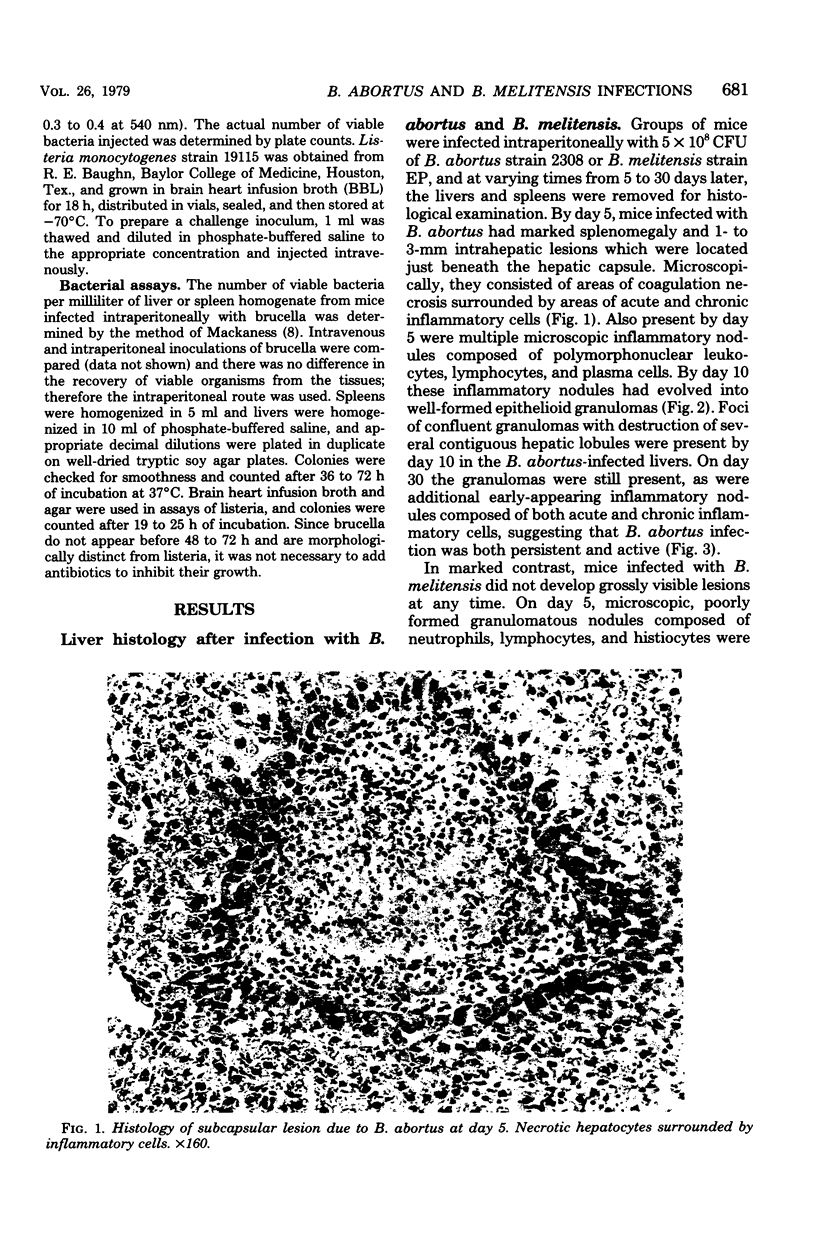
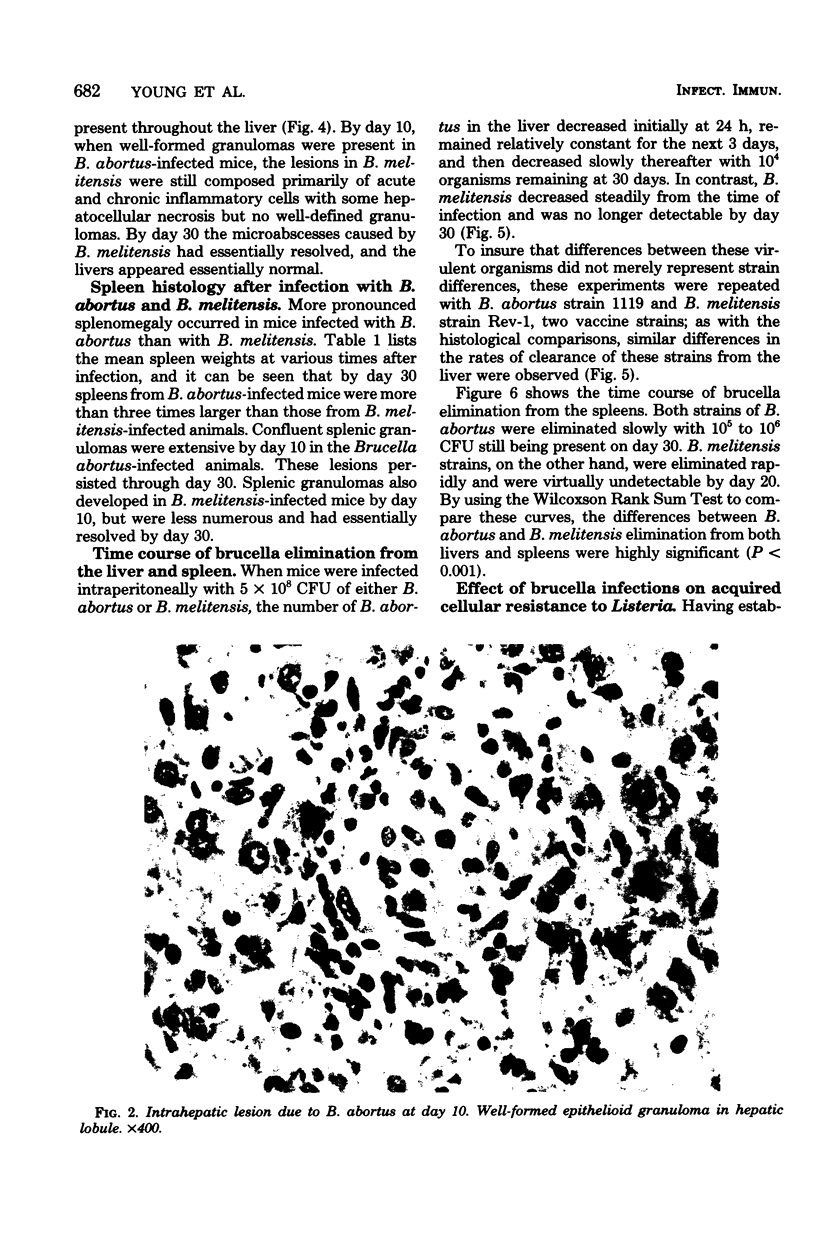
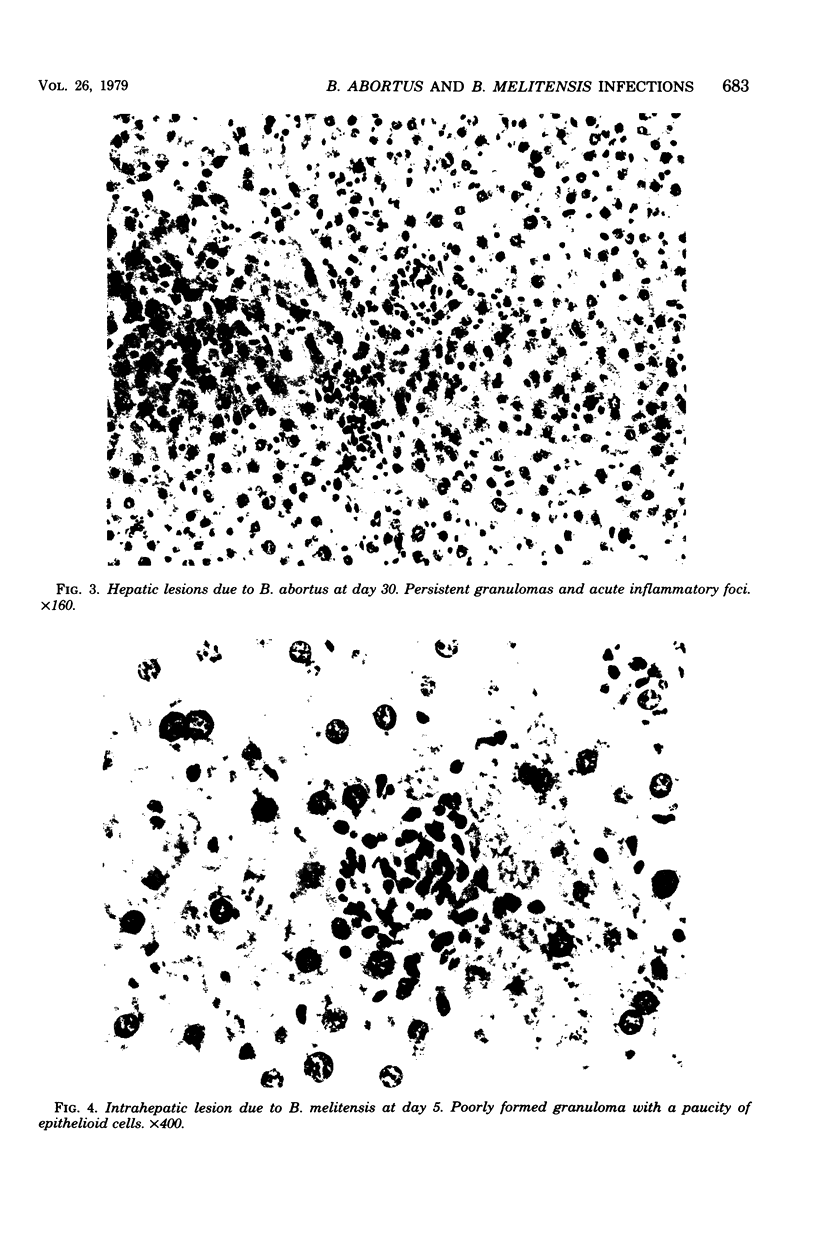
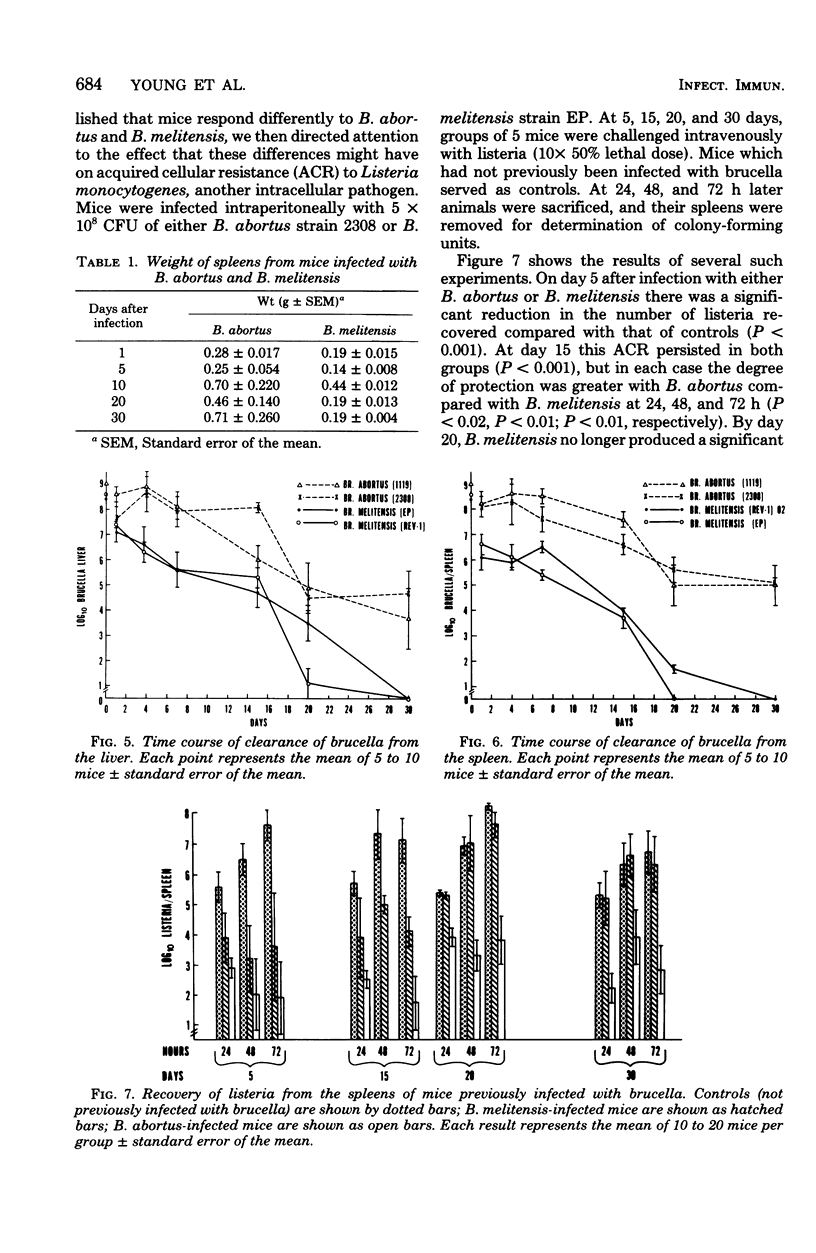
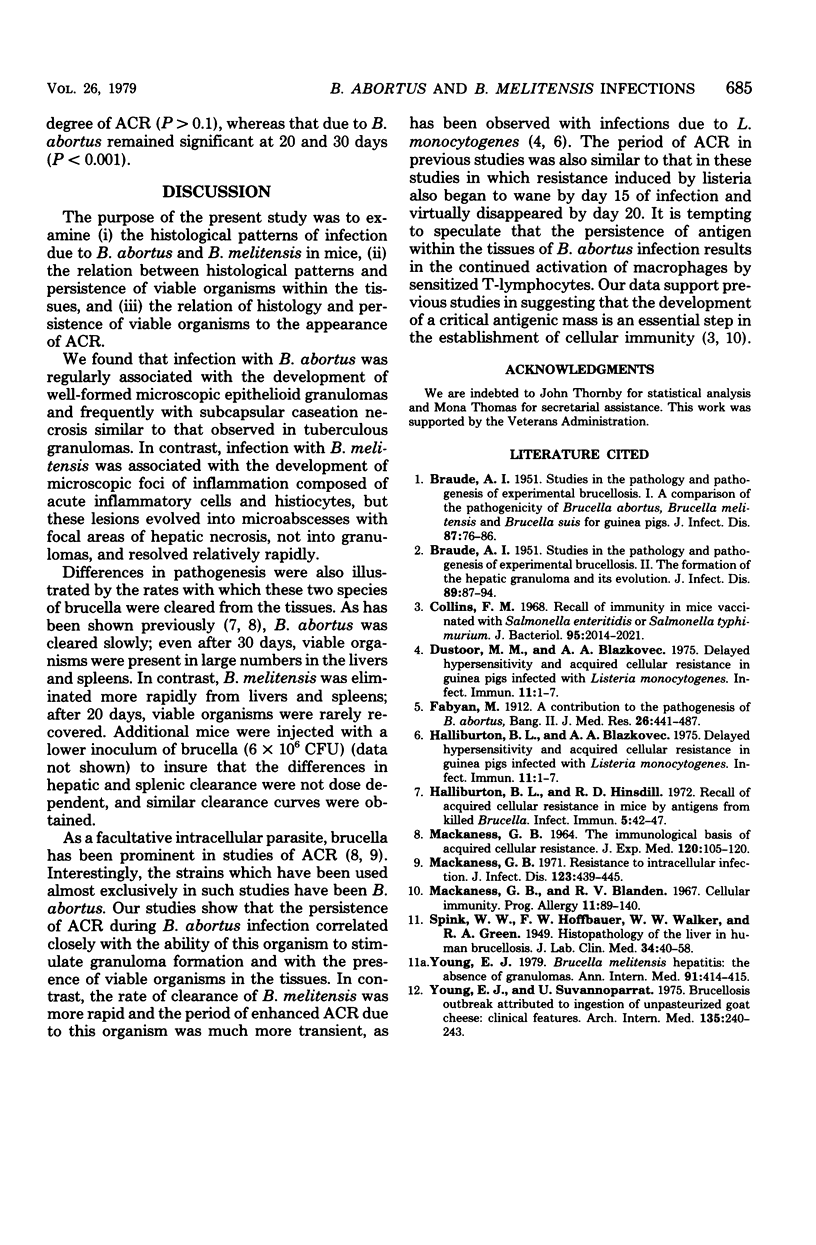
Images in this article
Selected References
These references are in PubMed. This may not be the complete list of references from this article.
- BRAUDE A. I. Studies in the pathology and pathogenesis of experimental brucellosis. I. A comparison of the pathogenicity of Brucella abortus, Brucella melitensis, and Brucella suis for guinea pigs. J Infect Dis. 1951 Jul-Aug;89(1):76–86. doi: 10.1093/infdis/89.1.76. [DOI] [PubMed] [Google Scholar]
- BRAUDE A. I. Studies in the pathology and pathogenesis of experimental brucellosis. II. The formation of the hepatic granuloma and its evolution. J Infect Dis. 1951 Jul-Aug;89(1):87–94. doi: 10.1093/infdis/89.1.87. [DOI] [PubMed] [Google Scholar]
- Collins F. M. Recall of immunity in mice vaccinated with Salmonella enteritidis or Salmonella typhimurium. J Bacteriol. 1968 Jun;95(6):2014–2021. doi: 10.1128/jb.95.6.2014-2021.1968. [DOI] [PMC free article] [PubMed] [Google Scholar]
- Halliburton B. L., Blazkovec A. A. Delayed hypersensitivity and acquired cellular resistance in guinea pigs infected with Listeria monocytogenes. Infect Immun. 1975 Jan;11(1):1–7. doi: 10.1128/iai.11.1.1-7.1975. [DOI] [PMC free article] [PubMed] [Google Scholar]
- Halliburton B. L., Blazkovec A. A. Delayed hypersensitivity and acquired cellular resistance in guinea pigs infected with Listeria monocytogenes. Infect Immun. 1975 Jan;11(1):1–7. doi: 10.1128/iai.11.1.1-7.1975. [DOI] [PMC free article] [PubMed] [Google Scholar]
- Halliburton B. L., Hinsdill R. D. Recall of acquired cellular resistance in mice by antigens from killed Brucella. Infect Immun. 1972 Jan;5(1):42–47. doi: 10.1128/iai.5.1.42-47.1972. [DOI] [PMC free article] [PubMed] [Google Scholar]
- MACKANESS G. B. THE IMMUNOLOGICAL BASIS OF ACQUIRED CELLULAR RESISTANCE. J Exp Med. 1964 Jul 1;120:105–120. doi: 10.1084/jem.120.1.105. [DOI] [PMC free article] [PubMed] [Google Scholar]
- Mackaness G. B., Blanden R. V. Cellular immunity. Prog Allergy. 1967;11:89–140. [PubMed] [Google Scholar]
- Mackaness G. B. Resistance to intracellular infection. J Infect Dis. 1971 Apr;123(4):439–445. doi: 10.1093/infdis/123.4.439. [DOI] [PubMed] [Google Scholar]
- Young E. J. Brucella melitensis hepatitis: the absence of granulomas. Ann Intern Med. 1979 Sep;91(3):414–415. doi: 10.7326/0003-4819-91-3-414. [DOI] [PubMed] [Google Scholar]
- Young E. J., Suvannoparrat U. Brucellosis outbreak attributed to ingestion of umpasteurized goat cheese. Arch Intern Med. 1975 Feb;135(2):240–243. [PubMed] [Google Scholar]






